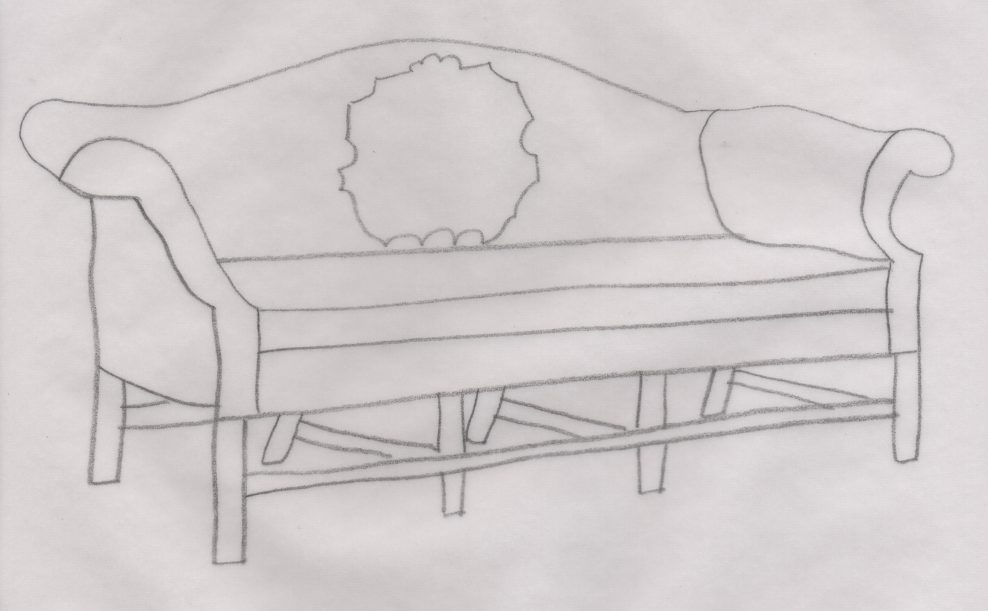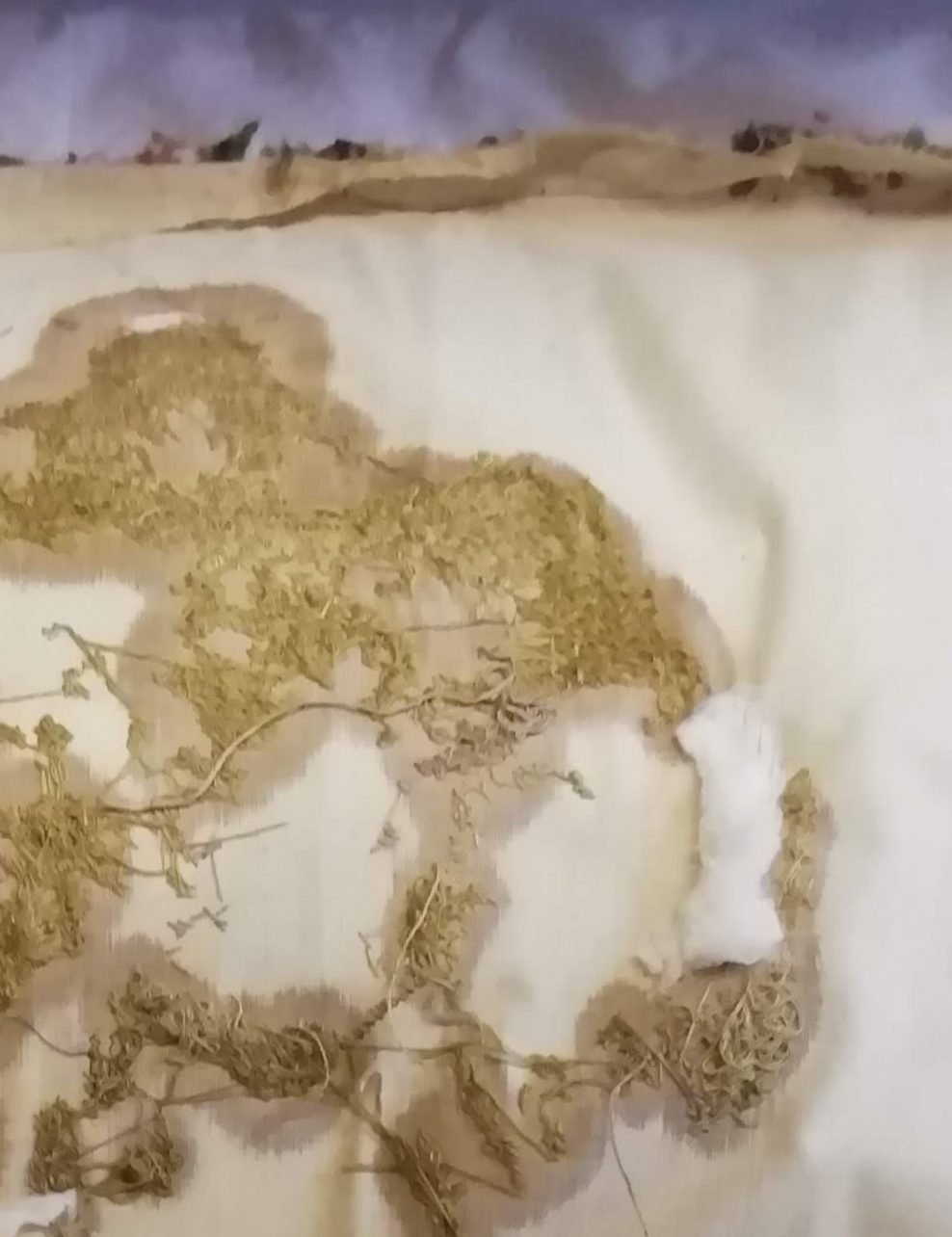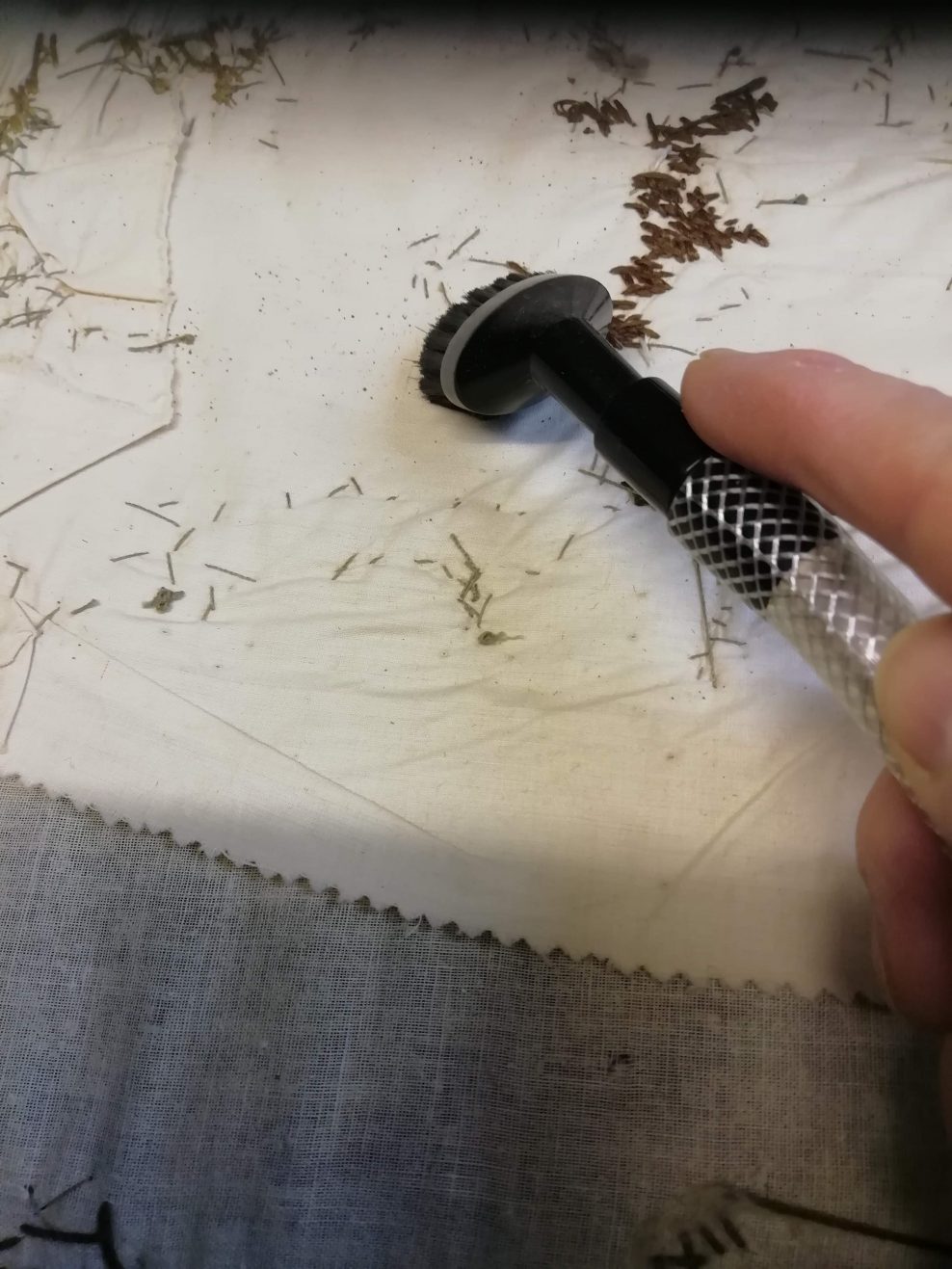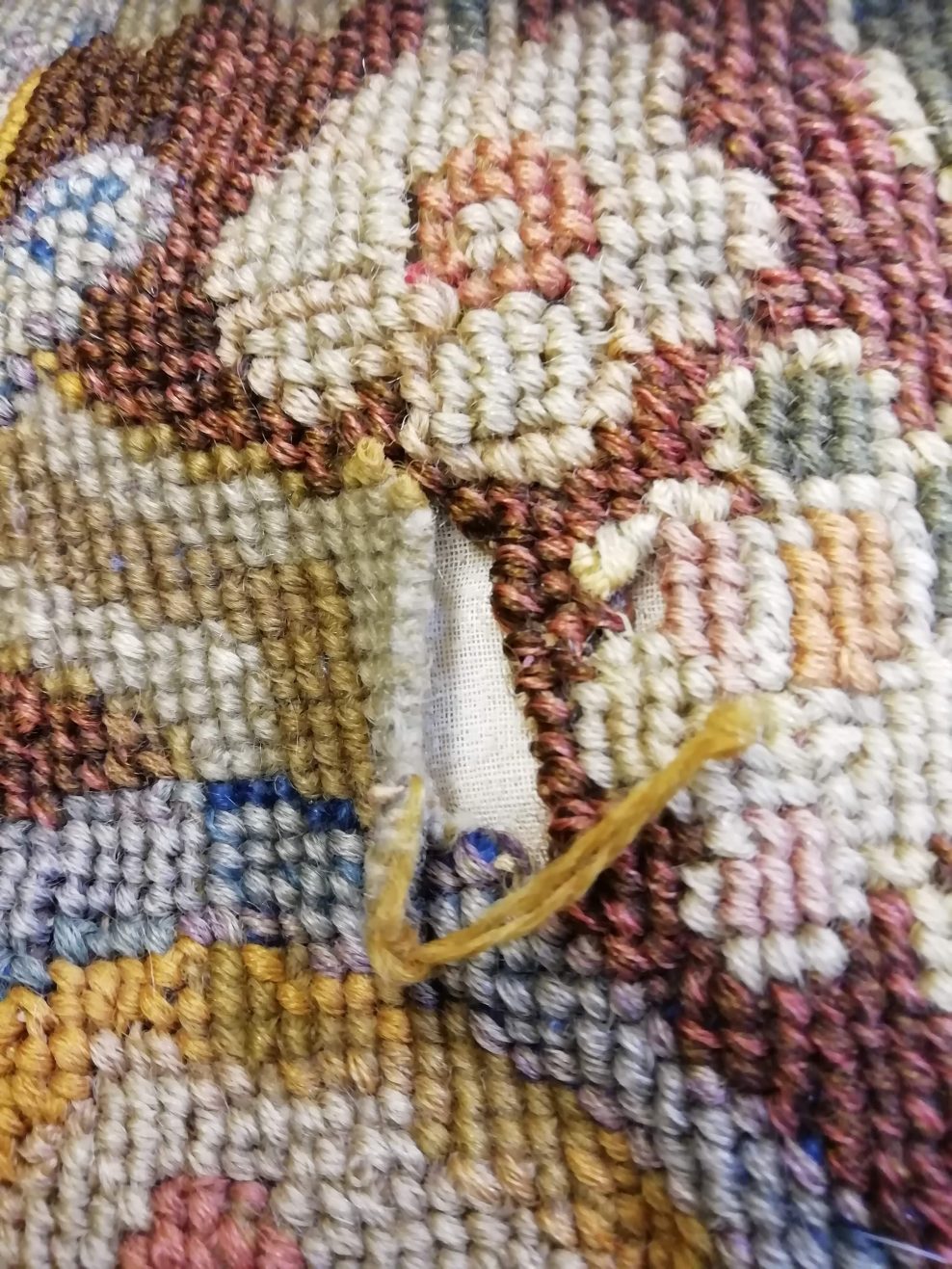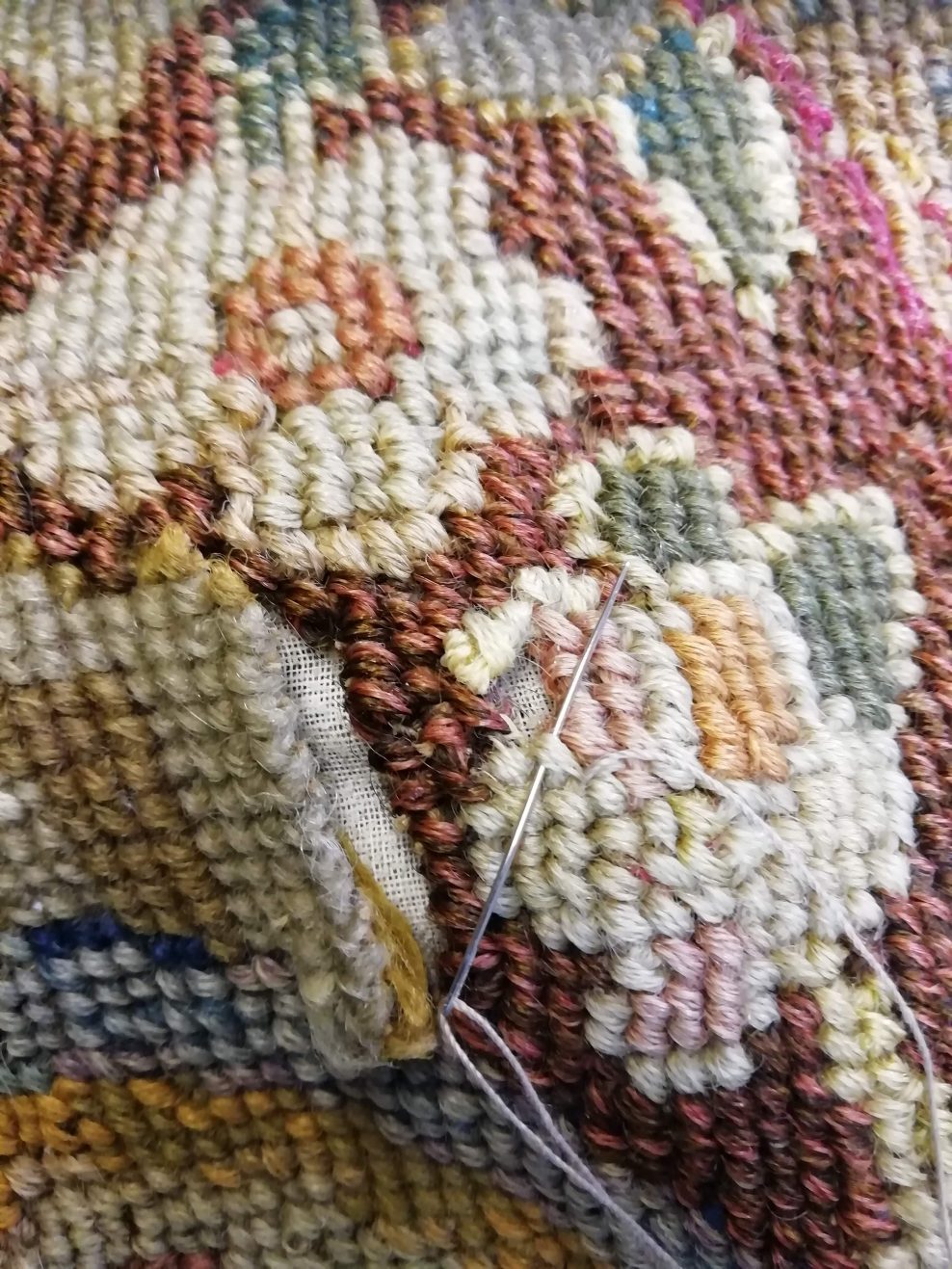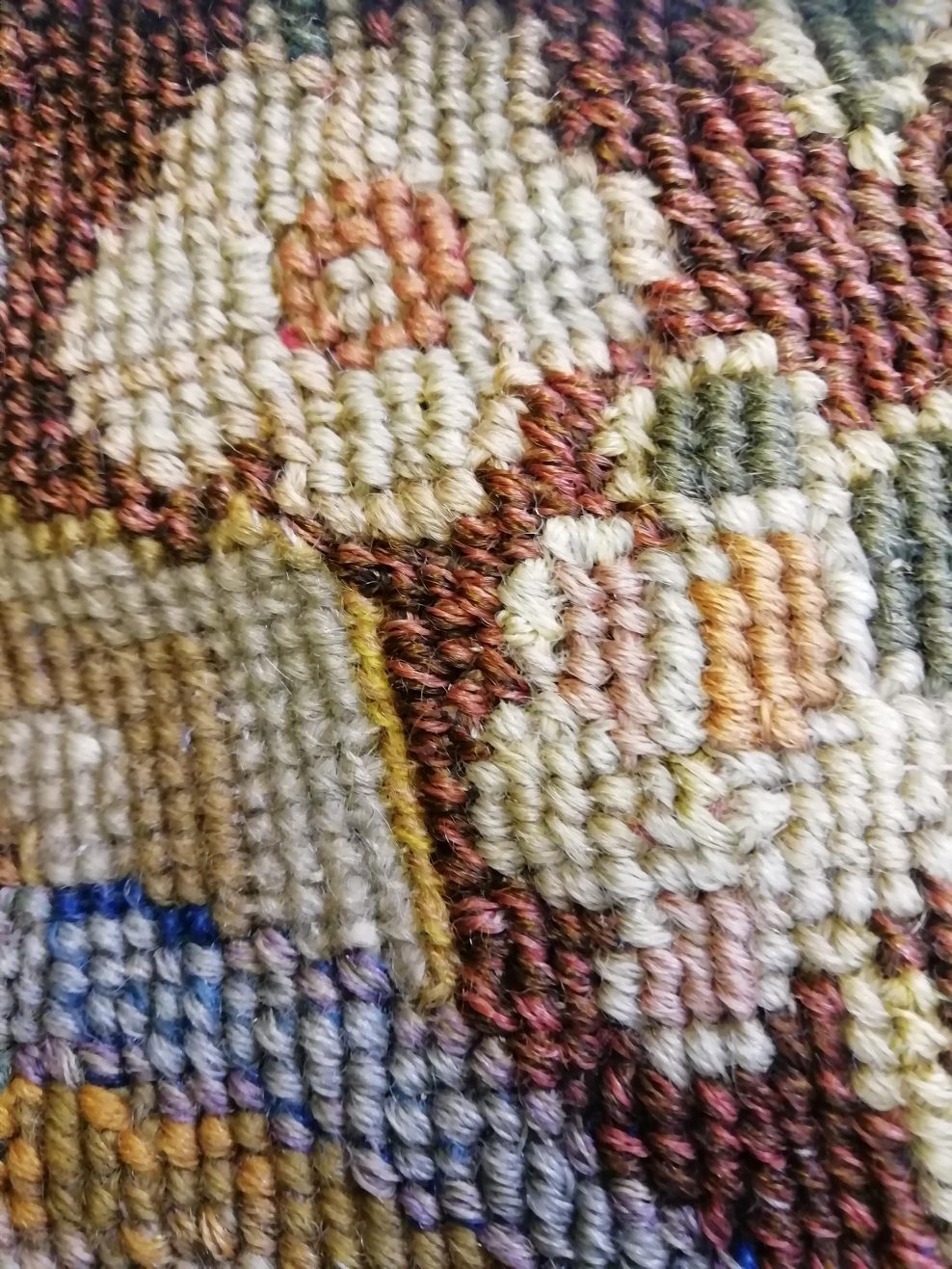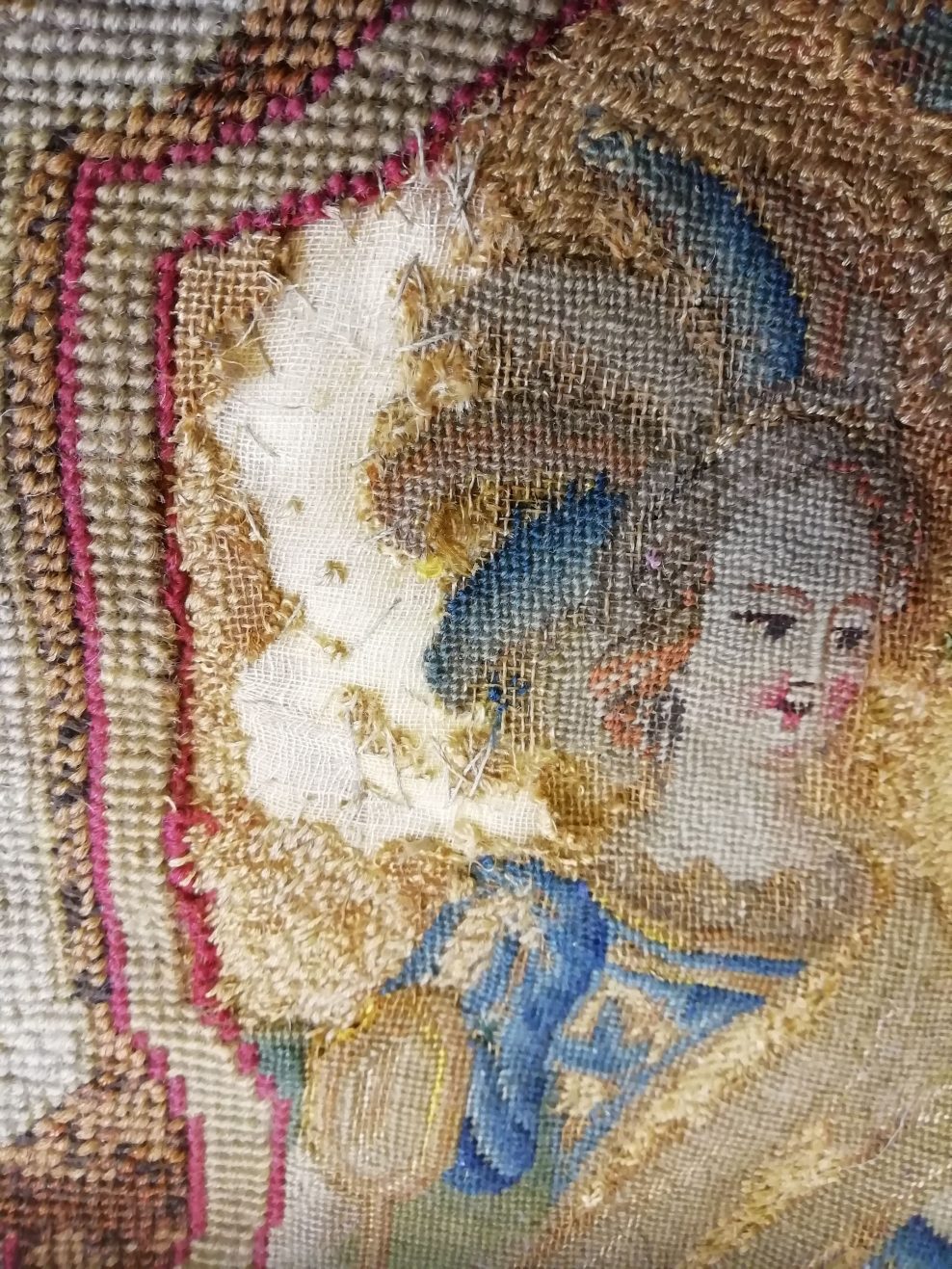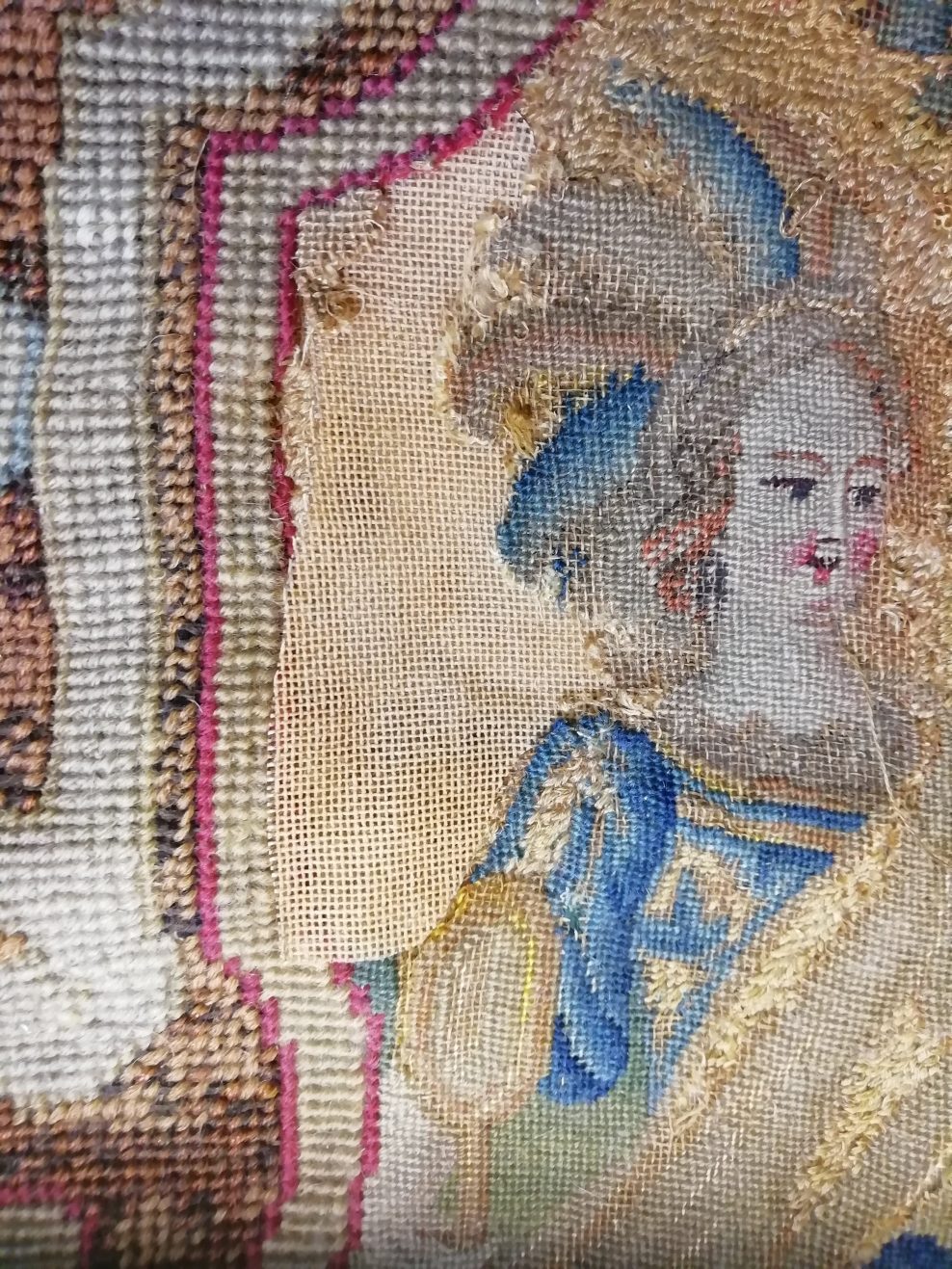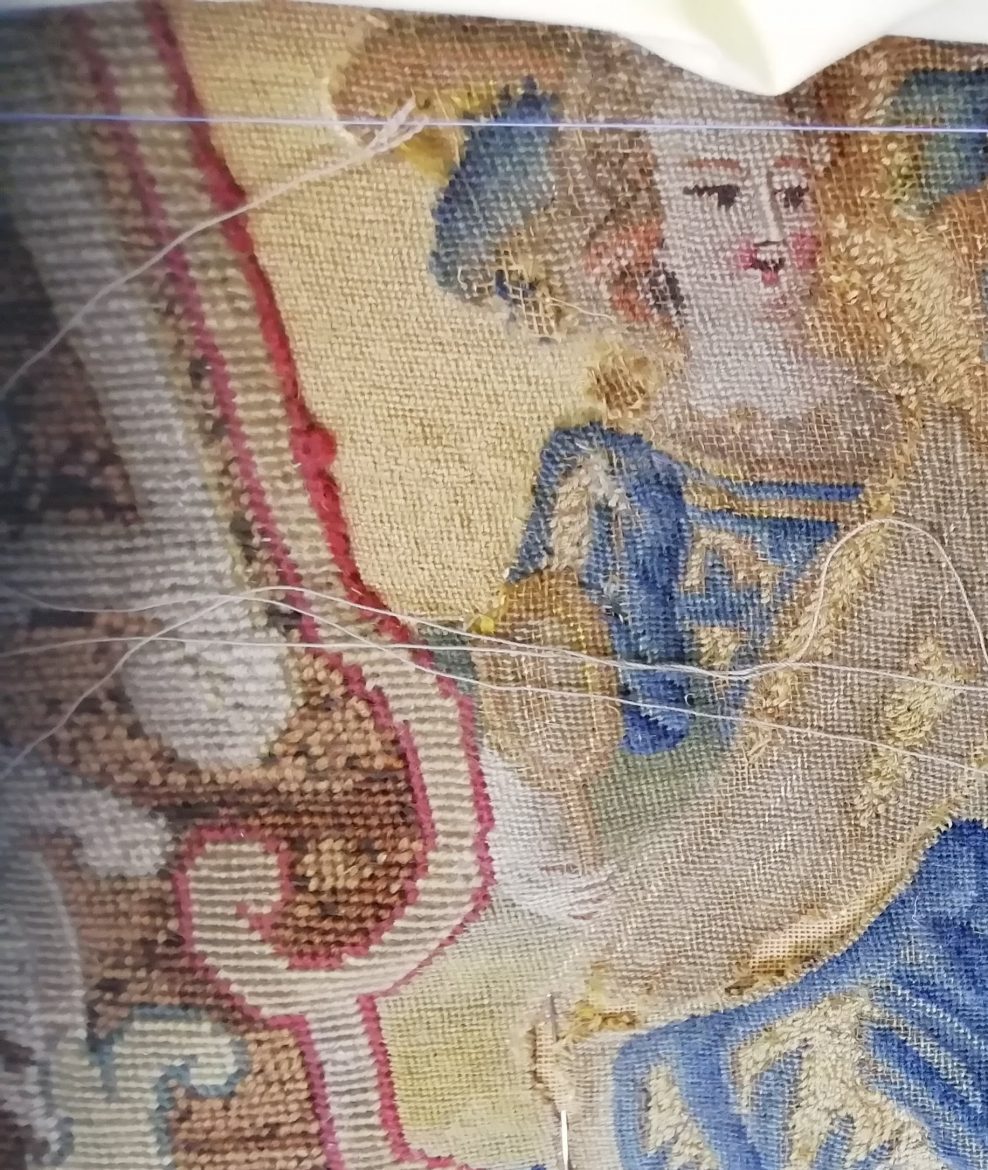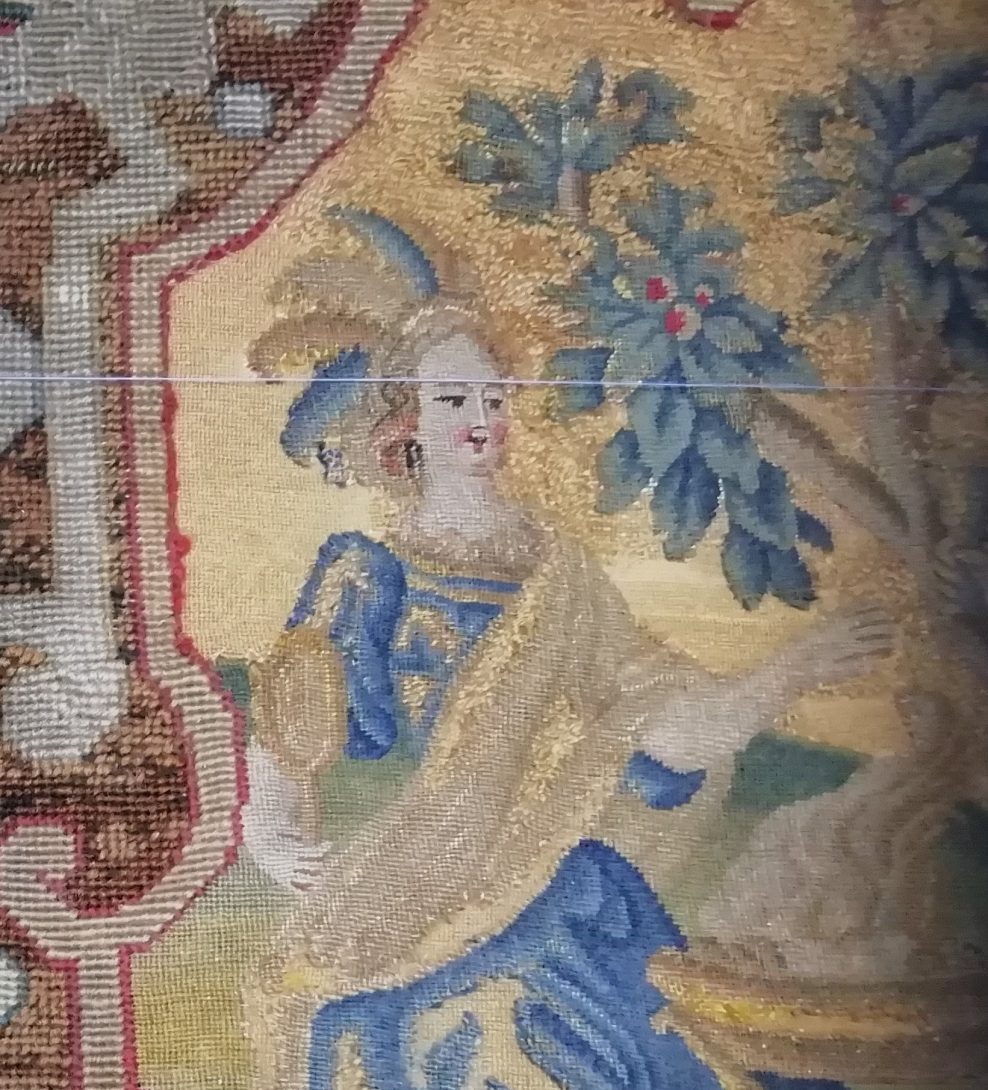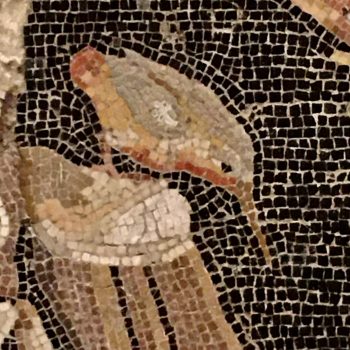Projects
Embroidered covers from a Georgian sofa
The embroidered covers from a late 18th century sofa, owned by a private collector, were cleaned, strengthened and reapplied to the sofa frame for minimal use in a private home
A George III mahogany sofa, dating to the third quarter of the 18th century, the serpentine back, scrolled arms and top and sides of the squab cushion covered in gros and petit point embroidery, with a central cartouche showing two female figures, surrounded by foliate and strapwork motifs on a plain ground. The sofa measures 38 ½ in. (98 cm.) high; 80 in. (203 cm.) wide; 31 in. (79 cm.) deep.
The embroidery is worked in polychrome wool and silk threads in tent stitch on an undyed linen canvas ground fabric. The edges of the arms, at the junction of the back and arm cover panels and all round the upper edge of the cushion are trimmed with a braid woven with plush square motifs.
The covers had been extensively reworked. The polychrome wool threads were badly faded. Almost all the original dark brown background wool threads had been embroidered over with mid-brown wool threads, seemingly because the dark brown original threads had worn away, leaving the linen canvas ground exposed. The mid-brown wool threads are likely to have started out matched to the original dark brown. Portions of other colours of wool thread had also been reworked. The canvas ground was weak all over, with many splits over the entire surface of the covers. Where splits occurred, the embroidery threads had started to unravel. In places, such as the proper right side of the petit point embroidery on the central cartouche, the canvas was holed. The upholstery was modern. The webbing and bottoming fabrics on the underside of the sofa were all replacements, as were the fabrics on the upper face of the sofa seat, the lower face of the squab cushion and the outer back and sides of the sofa.
The brief was to remove, conserve and replace the embroidered covers on the sofa for light use in a private house.
The sofa was thoroughly documented.
The embroidered covers were removed from the sofa frame.
The covers were surface cleaned with low-powered vacuum suction to remove any loose, particulate soils. Loosely adhered calico patches were carefully peeled away from the reverse of the panels.
Each panel of embroidery was attached to a full lining of new linen fabric. Support stitching and laid and couched stitching was worked over the entire panel, holding splits together and supporting particularly weak areas of embroidery and ground canvas. Small panels of new fine weave linen canvas, with the same thread count as the original canvas, dyed to match the original backing, were inserted behind the worst of the holes in the central cartouche of the back panel. Tent stitch was worked in dyed mercerized cotton thread over the new canvas patches to blend with the original stitching. These new patches are attached to the new linen lining fabric only – they could be removed, if necessary, without damaging the original embroidery.
The supported covers were re-applied to the sofa with staples, blued steel tacks and stitching worked in waxed linen thread and dyed polyester thread.
After treatment
The sofa is in a sounder condition than before. Damaged areas of stitching and sizable splits in the ground canvas have been strengthened and supported. The owner is aware that prolonged use of the sofa will result in further splits opening up in the ground canvas.
To preserve the colours of the embroidery threads the sofa should be positioned away from bright natural or artificial light. To maintain the embroidery and the frame at a constant relative humidity, the sofa should be positioned away from sources of heat, such as radiators, wood burners or open fires.
